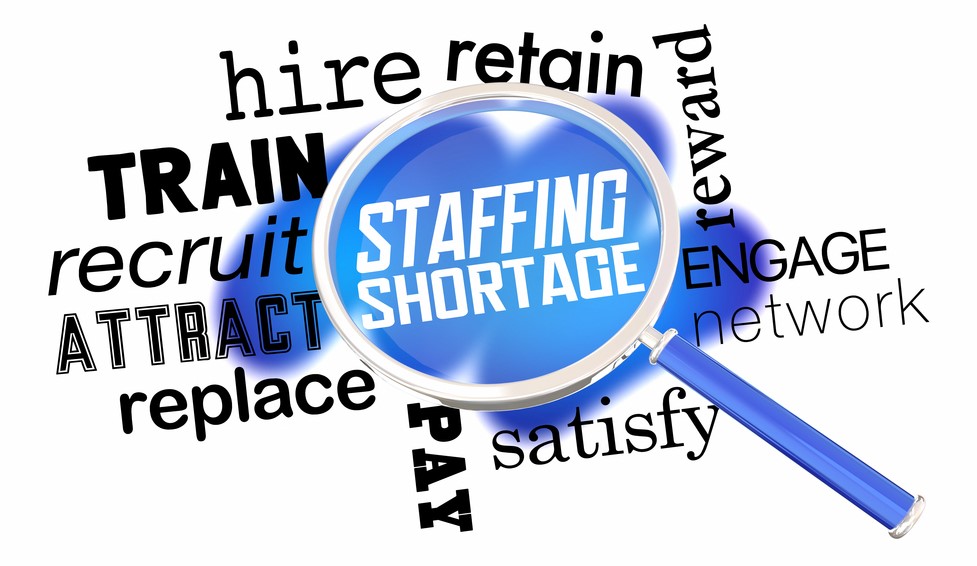
Every industry is facing the same challenge; overcoming workforce shortages. It’s an ongoing battle, but there are ways to help you win the war. We offer tips and tools for victory, from retaining your existing staff(in the face of the great resignation) to recruiting new talent and then successfully onboarding said talent.
Retaining current staff: Foundational to everything you do to overcome workforce shortages is ensuring you retain your existing staff. You’ve already invested in them, and they already know the ins and outs of your company. Furthermore, they will play a significant role in onboarding and training your new hires.
- Create a fun, friendly culture –beginning with taking time to know your employees by name. If your company is too large for that, know your managers by name, who know the department heads by name, who know their players by name –you get the picture. Take time to say hi, ask how their day is and listen to their response.
- Speaking of listening – keep an open-door policy of transparency. Listen to your staff’s ideas, needs, and feedback.
- Communicate – keep your employees in the loop. Don’t spring surprises.
- Promote flexibility – whether it’s on hours (can you offer the option of four 10-hr days?) or location (think remote or hybrid for appropriate positions), being flexible is critical.
- Recognize accomplishments – from hard work, creativity, punctuality, and attitude to innovation and achievements, express your appreciation. Make your thank you specific as in “I appreciate your punctuality. It sets the standard for all of us.” Don’t hesitate to add a tangible reward. Employees who feel valued and supported stay longer.
- Pay market wages, plus a little – stay ahead of your competitors. Include popular perks.
- Encourage and support personal and professional growth – offer opportunities to cross-train, learn new skills, and move forward within the company.
Finding new talent: It’s past time to pull out all the stops. Being proactive in recruiting requires using multiple options.
- Establish an active, rewarding employee-referral program – potentially one of your best sources for new talent – both active and passive. Communicate clear guidelines, provide the necessary tools, and offer motivating incentives.
- Grow with technology –data-driven recruiting using real-time analytics and insights can provide a boost to your recruiting. Incorporate automated candidate nurturing. There are multiple options, from applicant tracking systems to recruitment marketing software and CRM.
- Take advantage of social media – by choosing the platforms most used by your target candidate audience. Excel in posting style and stay active. Encourage input and maintain a fast response time.
- Focus on DEI and multiple sources – don’t miss the incredible benefits of diversity in the workplace. Including diverse backgrounds, ethnicities, work styles, belief systems, age, gender, etc., brings differing perspectives and increased creativity, not to mention productivity, to your workforce. In addition, hiring veterans, disabled workers, and reformed felons can bring often-overlooked talent to your roster.
- Partner with a staffing agency –you’re busy running your business, managing your teams, and retaining existing talent – not to mention keeping up with technology. So do what you do best and partner with a reliable staffing agency that will work hard to find you the best talent for each open position.
Onboarding new talent: The recruiting clincher is a successful onboarding program. Failure to do so results in a revolving door for new talent, but a well-thought-out program encourages long-term, healthy employee relationships.
- Onboarding begins with company culture –it’s an attitude, a value system that says employees – both old and new matter. So before a new employee walks through the door on their first day, ensure they have all pertinent info, their workstation is ready, your current staff knows about the hire, and someone has been assigned as the newbie’s go-to” guy or gal.
- Day one is vital –Welcome your new hire with a smile, a tour, and key introductions. Plan a snack break or, when appropriate, a company luncheon to help your new hire get to know everyone. Ensure that they have the necessary ‘tools.’ For example, a cheat sheet to relevant passwords and codes, a company handbook, an overview of their role and first assignment, your expectations, and a timeline for the first 30-90 days. Allow time for their questions.
- Onboarding isn’t over in a week or two –you shared your expectations and timeline on the first day, so follow through with your checkpoints. Of course, a C-Suite executive will be a different picture than an entry-level light industrial worker, but either way, follow-through is crucial. Ensure the assigned ‘go-to’ or mentoring individual takes their role seriously. Sometimes personalities don’t mesh, requiring a change.
Strategic battle plans are rarely simple, but when planned and carried out with diligence, they are often highly successful. The team at Robbins Staffing is spurring you on and standing by, ready to help you execute yours successfully. Contact us today.


